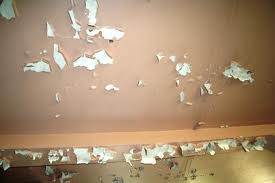One of the most common problems associated with paint jobs is peeling paint. Many painting jobs are requested as a result of peeling paint and therefore the most common question asked is “How do you prevent peeling paint?” Unfortunately, the answer to this question is not straight forward. For paint to peel it can be a result of many different causes, but it is basically where paint cannot get a proper grip on the substrate (surface) itself.
Here are the most common causes of peeling paint:
Moisture and Water
Peeling paint is most commonly created when water gets under the paint. Therefore, the most common areas for peeling paint to occur are in the wet areas of a house or building e.g. bathroom, laundry or kitchen. However, there may be other issues with the premises such as excess humidity or a leaky roof. Collectively, you can be assured that water is the number one cause of peeling paint issues. Even if water damage cannot be seen, moisture could still be wreaking havoc.
Inadequate Preparation – Cleaning and Priming
Before a paint job begins it is essential to ensure the area to be painted is cleaned with mild soap solutions and allowed to dry completely. Dirty walls are a precursor to peeling paint and will most definitely lead to peeling paint. If a coat of paint is applied over a dirty surface, it is almost guaranteed to peel or crack in the future. It is also important that a good primer is used in the preparation phase to help assure adhesion of the paint. Sometimes an incorrect primer is used, or the problem could be more simple – no primer at all was used. A primer is essential to ensure a proper preparation of the job site.
Combining Different Paint Types
When one type of paint is covered over by a different type of paint this can cause peeling paint. For example, when latex-based paint is used to cover previously painted areas that used oil-based paint, peeling will occur. You need to be aware of the paint that has been previously used and choose your next layer wisely.
Dryness
This may seem a bit of a contradiction, but while moisture and water is the most common cause of peeling paint the reverse situation can also be a cause for paint to peel. The best way to describe it, is similar to your skin. When your skin is not moisturised and the environment is harsh e.g. windy, dry or cold, this can cause your skin to crack. In this instance, when put in a similar environment as described, paint is like your skin and peeling paint can occur.
Strange Surfaces
This must be given some thought; exactly what surfaces you want painted and which paint is to be used for each surface. The same type of paint cannot be applied to different surfaces. For example, if you are painting new wood, even if you think it’s dry, it will prematurely peel because the paint degrades from interaction with the wood’s natural oils leaching out. Wood that is not cured thoroughly can also have too much moisture present for good adhesion.
Heavy layering
When a previously painted wall is re-painted this adds extra weight to the wall. After a few generations, if a wall has experienced several paint jobs then the weight of all the paint can cause aggravation and gravity will always do it’s job. This means eventually everything must come down, including paint!
Off Paint
All paint has a use-by-date and certain environments can cause paint to reach it’s use-by-date prematurely. For example, if paint is left to the elements it is not a super power substance and unfortunately has the ability to freeze. Being in Queensland, obviously we don’t have this problem. But the main point is to ensure that paint has not gone bad before usage.
Learn about Rochele Painting Services
Age
Paint does not last forever. Like all of us a paint job ages and this is the simplest cause of peeling paint.
So, as you can see there are many different reasons to why paint peels which means there a several solutions to ensure that peeling paint is minimised.
Peeling Paint Solutions:
The key solutions to remember that Rochele stands by are:
- – Well cleaned and prepared surfaces
- – Identifying problem areas i.e. water/moisture damage and fixing these before painting begins
- – Choosing the correct type of paint for the surface
- – Ensuring paint is not off
- – Identifying age as a problem
- – Identifying previously painted areas and ensure more layering will not cause the paint to peel and if so preparing the area as needed.
